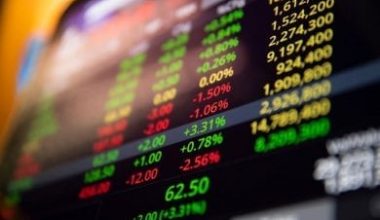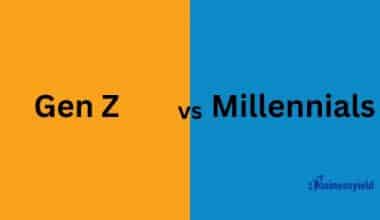In some countries, the government owns monopoly enterprises in industries deemed critical to the economy’s goals, such as finance, utilities, and the automotive sector. Domestic competition is absent in industries that become part of the command economy. But what is “Command economy”?. Read on to learn more about command economy and see the examples of countries that practice it.
What is a Command Economy?
A command economy is a type of political system in which a central governing body determines the allowable levels of output and the prices that can be paid for goods and services. The majority of industries are held by the government.
A free-market system in which demand determines output and prices is the major alternative to a command economy.
The command economy is a component of a communist political system, whereas capitalist nations have a free market system.
How Command Economies Function
The government sets a central economic plan in a modern, centrally planned command economy. For example, the government may design a five-year plan that establishes economic and sociological goals for each industry and region of the country. Short-term strategies transform goals into actionable objectives.
All resources are allocated by the government in accordance with the central plan. It strives to make the best use of the nation’s money, labor, and natural resources.
Command economies seek to maximize the use of each person’s skills and competencies. A command economy tries to reduce unemployment by doing so.
The central plan establishes the production priorities for all goods and services. Quotas and price limits are examples of such measures. The goal is to provide enough food, shelter, and other necessities for everyone in the country. The central plan also establishes national priority on matters such as war mobilization.
The government owns monopoly enterprises in industries deemed critical to the economy’s goals, such as finance, utilities, and the automotive sector. Domestic competition is absent in industries that become part of the command economy.
To execute the central plan, the government enacts laws, rules, and directives. Businesses adhere to the production and recruiting targets outlined in the plan. They are unable to respond to free-market pressures on their own.
Command Economy Characteristics
The following characteristics distinguish modern command economies:
- The government creates economic plans for the majority, if not all, industries and regions.
- The government distributes the nation’s capital, labor, and natural resources in the most efficient way possible.
- State authorities own monopoly businesses in the financial, utilities, and automotive industries.
- The government controls production and prices.
- To carry out the centralized economic plan, government policies are developed.
This type of economic structure is prevalent in communist or socialist countries such as North Korea today.
Examples of Countries with Command Economy
Consider the following examples of countries with a command economy:
- Belarus: It is still a command economy, despite being a former Soviet satellite. The government owns 80% of the country’s enterprises and 75% of its banks.
- China: Following World War II, Mao Tse Tung established a communist-ruled society. He imposed a rigidly managed economy. The current leaders are transitioning to a market-based system. They are still developing five-year plans that establish economic aims and objectives.
- Cuba: Fidel Castro’s revolution of 1959 established Communism and a planned economy. Until 1990, the Soviet Union financed Cuba’s economy. To stimulate growth, the government is gradually implementing market reforms.
- Iran: The government has direct and indirect influence over large portions of the economy. This control has resulted in inefficiencies and recessions, which have been exacerbated by foreign sanctions. These sanctions were lifted in 2015 as part of a nuclear trade agreement but were reinstated by the US in 2018 after President Trump walked out of the agreement.
- Libya: Libya’s economy is nearly totally based on the oil and gas sector, and the majority of Libyans work for the government.
Read Also: Market Economy: Features, Examples, Advantages & Disadvantages
- North Korea: North Korea has had one of the world’s most centrally planned economies for decades. Because of mismanagement, underinvestment, and material shortages, the US administration believes North Korea’s industrial capital stock is nearly beyond repair. North Koreans continue to experience famine and malnutrition.
- Russia: Vladimir Lenin and the Russian Revolution established the first Communist command economy in 1917. The Union of Soviet Socialist Republics (USSR) was also the world’s longest-running command economy, operating from the 1930s to the late 1980s. The Russian state has given ownership of the main firms to oligarchs since the demise of the USSR.
Some centrally planned economies, such as China and Russia, have begun to incorporate elements of the market economy, resulting in a mixed economy. Other economies, such as North Korea and Cuba, continue to be fiscally conservative.
The Benefits of Command Economies
Those in favor of command economies say that they allow the government to overcome inequality and market failure by establishing a society that prioritizes social welfare over profit.
- Monopoly power can be avoided through command economies.
- A common element of capitalist economies is mass unemployment, which command economies may avoid.
- Command economies may create items that benefit society while also ensuring that everyone has access to basic requirements.
- Command economies are frequently connected with the late Soviet Union’s and Cuba’s failed, inadequate economies. However, the Soviet Union saw periods of extremely rapid economic growth in the 1920s and 1930s. The Soviet Union had remarkable economic growth between 1928 and 1940 (the first three Five-Year Plans). It progressed from a predominantly agrarian community to a powerful industrial powerhouse. Furthermore, this occurred during the Great Depression, a period of low global demand.
The Drawbacks of Command Economies
- In general, government entities lack information about what to generate. People who may not be aware of what is going on make the decisions because of decentralization. Many manufactured commodities, for example, were not utilized in the Soviet Union’s command economy.
- You cannot meet consumer preferences in a command economy.
- In a command economy, resources are difficult to shift to dynamic and efficient enterprises since inefficient firms are safeguarded and maintained.
- The command economy endangers liberty and democracy. They establish a tremendously powerful government that limits individual rights in order to achieve economic goals. This creates an environment in which governments can exert control over other aspects of people’s life.
- Command economies are often bureaucratic, with committees and planning stifling decision-making.
- Price controls in command economies cause both shortages and surpluses.
Arguments Against Command-and-Control Economies
Any capitalist would argue that command economies confront at least two significant issues: the first is an incentive problem, and the second is a knowledge vacuum among the central planners who make all the choices.
The Incentive Issue
The incentive issue begins at the top. Even in a command economy, policymakers are all too human. Because they are not restrained by market-based forms of discipline such as sovereign credit ratings or capital flight, political interest groups and power battles amongst them will dominate decisions in a command economy even more than in a capitalist economy.
Wages for workers are fixed centrally, and profits are removed as an incentive for management. There is no compelling motive to strive for excellence, enhance efficiency, cut costs, or go above and beyond the bare minimum to avoid government censure.
In a command economy, getting ahead means pleasing the party bosses and having the necessary connections rather than maximizing shareholder value or meeting consumer desires. Corruption is often ubiquitous.
On a greater scale than observed in capitalist civilizations, the incentive dilemma involves the tragedy of the commons. Commonly owned resources are effectively unowned. All of their users (or employees) have no reason to keep them. In a command economy, everything like housing projects, factories, and machinery wear out, break down, and fall apart quickly.
The Vacuum of Information
Austrian economists Ludwig von Mises and F. A. Hayek was the first to describe the difficulty of economic calculation in a command economy. Central planners must determine how much of each product and service that you should manufacture and deliver.
This is determined decentralized in a free market system by the interaction of supply and demand. Consumers shape demand by purchasing or refusing to purchase goods and services. Producers respond by producing more of the goods and services that customers want.
Furthermore, all of these variables are quantifiable. Someone is keeping track of how many avocados, blue jeans, and lug wrenches are in demand at each stage of the supply chain.
In a command economy, central planners should, at the very least, understand the population’s basic life-or-death demands in terms of food, clothes, and shelter. However, without the forces of supply and demand to guide them, they have no reasonable technique for aligning commodities production and distribution with consumer demands and preferences.
Over time, a command economy’s incentive and economic calculation difficulties waste resources and capital goods, impoverishing society.
Arguments in Support of Command Economy
Command economies, proponents believe, manage resources to promote societal welfare, as opposed to free-market economies, where this goal is secondary to achieving private profit.
Command economies may have greater employment control than free-market economies. They have the ability to manufacture jobs in order to put people to work when necessary, even if there is no actual necessity.
Finally, command economies are perceived as being more capable of taking decisive, coordinated action in the case of a national catastrophe or crisis, such as a war or natural disaster. Even market-based countries, however, may temporarily restrict property rights and dramatically enhance the emergency powers of their central governments during such catastrophes.
What Is the Difference Between a Command Economy and a Free-Market Economy?
Private firms determine their levels of production in a free-market economy in response to the law of supply and demand.
The government makes the decision in a command economy.
Few free-market economies today operate entirely on a laissez-faire basis. A government may employ public rules and laws to promote the manufacture of a product, such as fuel-efficient automobiles.
And some command economies have relaxed their grip. China’s economic boom began only after it developed its own blend of socialist ideology and capitalist enterprise.
How Do Central Plans Work in a Command Economy?
Communist countries with command economies are prone to developing multi-year plans that should enhance living circumstances for all citizens. China has had 14 five-year plans, the most recent of which ends in 2025.
In general, central plans create goals for each industry and strategies for each area. Industries have to contribute to government goals such as lowering carbon emissions and rebuilding rural economies.
The Shift from Command to Market Economies
Many command economies, including the Soviet Union, began to move to a mixed economy beginning in the 1980s. They accomplished this through a process of privatization and price deregulation. Mixed economies combine the advantages of a free market with some government intervention. Furthermore, China has transitioned from a command economy to a mixed economy, yet remains politically communist.
What Do You Call a Command Economy?
In a command economy, sometimes referred to as a planned economy, all economic operations are planned, coordinated, and under the direct supervision of the central government in order to maximize societal welfare. In a contrast to free-market economies, command economies do not let market forces like supply and demand control production or prices.
A Command Economy Is Run by Who?
In communism, the state has complete control over all means of production, including land, labor, and capital. The government, on the other hand, determines what must be produced, how much will be produced, and how much the goods should be sold under a command economy. Additionally, it controls earnings and investments.
What Aims Does the Command Economy Pursue?
A command economy is designed to help the government achieve its economic objectives. These objectives may include maintaining full employment, limiting inflation, or fostering particular businesses. Thus, boosting economic output is not always the goal of a command economy.
What Is the Structure of the Command Economy?
An economic system known as a command economy is one in which the means of production are owned by the government and economic activity is governed by a central organization that sets quantitative production targets and distributes raw materials to productive businesses.
What Advantages Does the Command Economy Offer?
Command economies, in which the government sets prices and output levels, provide several benefits, such as minimal or no unemployment, quick decision-making, equality among citizens, and an emphasis on the worker rather than profits.
Command Economy FAQs
Is the US a command economy?
In terms of consumer goods and corporate services, the US economy is a free market. It is a command economy in terms of defense (as well as certain parts of retirement benefits and medical care).
What kind of economy is China?
Since the implementation of Deng Xiaoping’s economic reforms, China has had what economists refer to as a socialist market economy — one in which a major state-owned enterprises sector coexists with market capitalism and private ownership.
What kind of economy is Japan?
Japan’s economy is a well-developed free-market economy. It is the world’s third-largest economy in terms of nominal GDP and fourth-largest in terms of purchasing power parity (PPP). It has the second-largest developed economy in the world.






